How to plant blackberries in the spring: timing, tips and tricks
Everyone knows that blackberries are like wild berries, which is probably why most gardeners prefer raspberries to them. But, in fact, blackberries can be successfully grown in your personal plot, because this is a rather unpretentious culture that does not require special care and specific knowledge of its agricultural technology.
Next, you will learn about when and how to plant a garden blackberry seedling in the open ground in your summer cottage in the spring, so that the plant quickly begins and begins to grow actively, and after a year it will please you with the first berries.
By the way! Most modern blackberry varieties do not have sharp thorns - they are thornless, which means that taking care of the berry bush will not be as dangerous as it used to be.
Another thing is that it grows very actively and aggressively, so your main task is to control its growth.
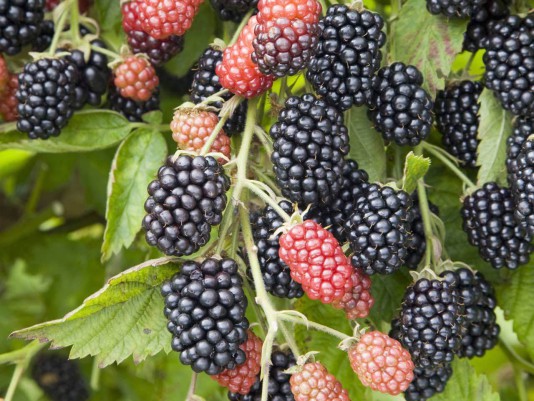
Content
When to plant blackberries in spring, in what month: optimal timing
You can start planting blackberry seedlings in the ground as soon as the snow melts on the site, the temperature is stable above zero and the ground warms up a little (at least up to + 5 ... + 7 degrees).
It is advisable to have time to plant the planting itself before the buds bloom, in other words, before the start of active sap flow.
Although, if you bought a seedling in a container (with ZKS - a closed root system), then it will most likely already have leaves and even, perhaps, flowers - this is normal.
Seedlings with ZKS can be planted all year round (all warm period).
As for certain dates, depending on the climatic conditions of your region, blackberries are planted from April to May.
Planting dates in spring in different regions
Depending on the climatic features of the region, the timing of the spring planting of blackberries can vary:
- In the South of Russia, you can plant blackberries in late March or early April.
- Gardeners of the Middle Strip (Moscow region) should wait until the second half of April or early May.
- In Siberia and the Urals, it is possible to plant raspberries in open ground only from May. As in the North-West (Leningrad Region).
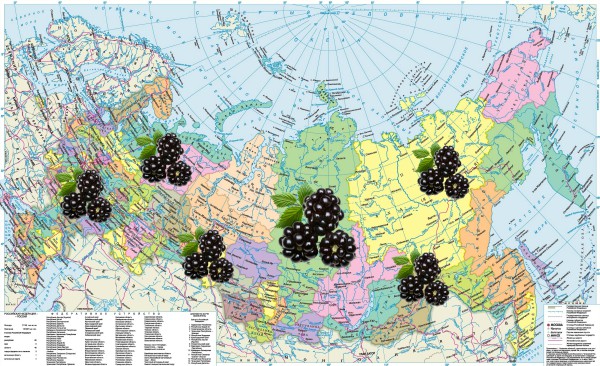
According to the lunar calendar for 2020
Choose the optimal date for planting seedlings can help youMoon calendar.
So, favorable days for spring planting of blackberries in 2020, according to the lunar calendar, are:
- in March - 26-29;
- in April - 11-15, 24, 25;
- in May - 2-10.
Of course, it is not always possible to get to the dacha on favorable days, therefore, the main thing is not to land on unfavorable dates according to the Lunar calendar - the days of the New Moon and Full Moon, as well as the period when the Moon is in Aquarius, because it is a barren and dry sign - in italics.
Unfavorable days, according to the lunar calendar for 2020, for planting blackberry seedlings in spring, the following dates are:
- in March - 9,19-21, 24;
- in April - 8,15-17, 23;
- in May - 7,13-14, 22;
- in June - 5,9-11, 21.
According to the Lunar Calendar, from the magazine "1000 Tips for Summer Residents".
When is it better to plant - in spring or autumn
Blackberries, like most crops, need to be planted during dormancy - early spring or in the fall.
However, blackberry is a very, very unpretentious plant (which is very difficult to get rid of later), in other words, it can be planted at any warm season (except winter). Moreover, this applies to seedlings with a closed root system (in containers).
If you decide plant blackberries in autumn, then before the onset of frost there should be a stock per month (or at least 3-4 weeks), this is how much time is needed for the successful rooting of the seedling.
By the way! As a rule, varieties with low winter hardiness are recommended to be planted in the spring (especially in cool regions), but winter hardy varieties can be planted as in the falland in the spring.
How to plant blackberries in spring: step by step instructions
What should be a seedling, varieties and varieties
When choosing a blackberry seedling, first of all, you should pay attention to its root system: it must be well developed (the length of the roots is at least 10 cm), and the appearance itself must be healthy. As for age, both 1 year old and 2 year old seedlings are suitable.
Naturally, the easiest way to buy a container plant (with an earthy clod), but it is usually more expensive than with an open root system, although its survival rate is higher.
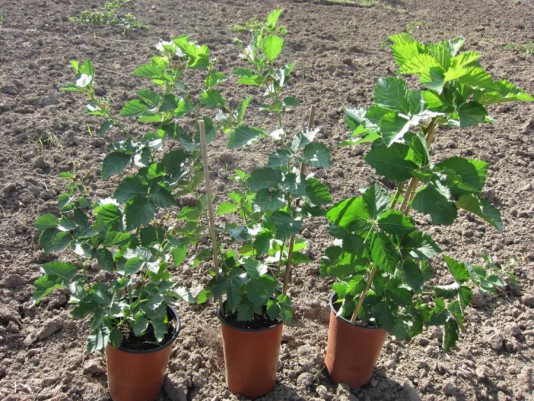
By the way! In the future, you can easily yourself propagate blackberries in one of the vegetative ways... For example, apical layers (the most popular and simplest method).

Also, you should definitely find out what kind of variety it is and what are its features (characteristics).
Important! Blackberries are a two-year crop that bears fruit on last year's shoots., in other words, it costs pay attention to the frost resistance of the variety... After all, if they (shoots) overwinter poorly (freeze), then the harvest will be very mediocre (but the plant will recover in any case).
Blackberries come in several varieties: erect, creeping and semi-creeping (or semi-erect).
At the same time, erect varieties, as a rule, always have thorns (thorns), and creeping and semi-creeping ones - thornless.
The most popular blackberry varieties:
- Creeping - Loganberry (raspberry-blackberry hydride = ezemalina), Texas, Boysen, Thornless Evergreen, Karaka Black, Helen, Silvan, Marion, Thornfrey.
- Upright - Darrow, Aghavam, Erie, Comanche, Cherokee, Ruben.
- Semi-creeping (semi-upright) - Smutstem, Black Satin, Kiowa (with spikes), Loch Ness, Chester, Natchez, Triple Crown, Brzezina.
Note! Thornfree is the oldest and sourest variety... If you plant blackberries, then high-quality (tasty and sweet) new varieties. For example, Thornless Evergreen or Black Satin.
Perhaps, for amateur gardening, it is best to choose exactly semi-creeping (semi-upright) or creeping studless varieties.
Landing place
When choosing a place to plant blackberries, you should focus on maximum illuminated — sunny plot, protected from the cold and searing winter winds (for example, so that the bushes are protected from the north by some structure or trees, dense green spaces). In this case, it is advisable to place blackberries on the upper, preferably southern (possibly southeastern) parts of the slope.
Do not plant blackberries in the shade (maximum - in light partial shade), without good lighting there will be no abundant fruiting.
If you are afraid that it will be very hot and dry in the sun, then you should know that, thanks to a strong root system, the bushes tolerate drought well and, as a rule, do not require frequent watering (especially if you mulch them).
However! Not frequent does not mean very rare. Watering should be very abundant: you should try to soak the earthen ball to a depth of 40 cm.
Ground water level must be at least 1.5 m from the soil surface.
Advice! If you do not follow the growth of the blackberry, then it will literally spread throughout the entire area and it will be very difficult to get rid of it. Therefore you need immediately limit its growth, namely, in the aisles, bury sheets of slate, old roofing iron or similar material to a depth of 40-50 centimeters.
What soil is needed
Blackberries are not the most demanding crop, but if you want to get high yields, then the soil must be sufficiently fertile and well-drained (moisture-consuming). Optimally, if they are sandy loam, or even better loamy (light or medium) soil with high moisture capacity. Perfect fit black earth.
But on clay soils, blackberries fail, because does not tolerate stagnant moisture.
Moreover, the optimal soil acidity - 5.7-6.5 pH... In other words, blackberries need soil. close or neutral acidity.
Important! Despite the fact that blackberries are considered a forest culture, acidic soil to her need not (Unlike blueberry).
You also need to consider that blackberries are very sensitive to soil salinity and does not tolerate high content of calcium carbonate in soil (in other words, alkaline soil, in which pH above 7).
Planting pit: dimensions, fertilizer to fill
A suitable planting pit for blackberries is 40 cm deep and 40 centimeters wide (diameter), although in general a pit 30 cm (50 cm deep (width)) will work. Or you can simply make a hole 2 times the size of the container if you bought a seedling with a closed root system.
By the way! remember, that blackberries do not like roots getting wet, which means that if you have clay soil, then it is imperative to make drainage (pour sand, expanded clay), i.e. dig an even deeper hole.
What to bring into the planting hole, from which to prepare nutritious soil:
- compost or humus;
- the top layer of fertile land (which remained after digging a hole);
- sand (if you have clay soil);
- potash and phosphate fertilizers.
Mineral: superphosphate (30-40 grams) and potassium sulfate (20-30 grams), or just 40-50 grams of nitroammophoska (or diammophoska).
Organic: bone meal (100-200 gr), wood ash (100-200 gr).
We mix everything thoroughly and separately prepare a mixture of humus (compost) and garden soil in order to subsequently fill it with a seedling.
Advice! It is advisable to prepare and fill the pit with nutrient soil in advance, at least 1-2 weeks before planting.
At what distance to plant
As a rule, in different sources you can find the opinion that the optimal scheme for planting blackberries is 2-3 meters between plants and 1-1.5 meters between rows.
However! This applies to creeping and semi-creeping varieties, but erect ones can be placed closer - at a distance of 1.5-2 meters between bushes and 1-1.5 meters between rows.
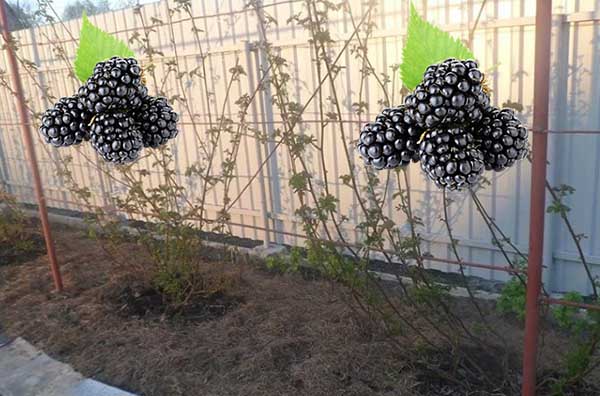
In any case, it should be borne in mind that blackberries are very actively growing shoots, which is why the distance between the plants should be sufficient for the shoots to be conveniently placed on the trellis.
Video: blackberry - description, planting and care
Pollination
Concerning pollination, then, as a rule, most varieties of blackberries have good self-fertility and are suitable for single-variety plantings (i.e. all seedlings can be of the same variety). Of course, by the way, there will be pollinating insects on your site.
However, if you want increase tying, then you can plant other varieties of blackberries for cross-pollination.
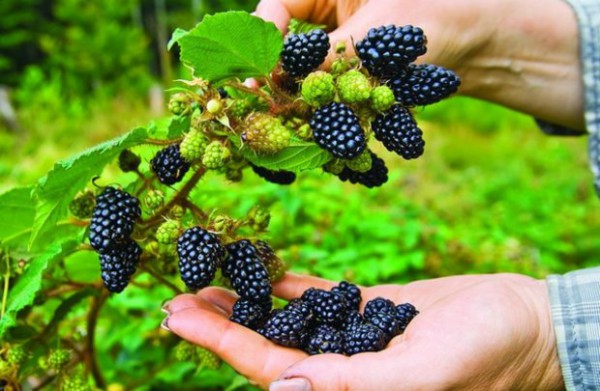
A good neighboring crop for blackberries is raspberries.since Crop care and requirements for growing conditions are very similar.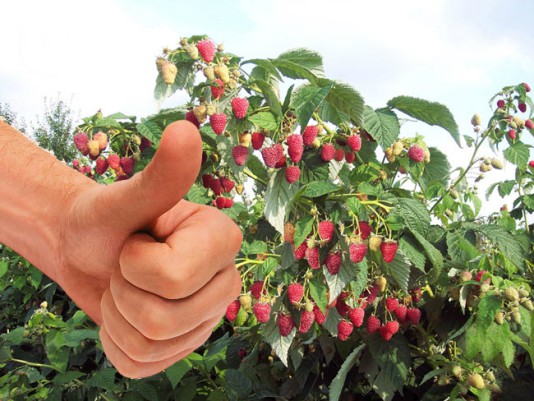
Direct landing
Step-by-step instructions for planting blackberry seedlings in open ground in spring:
- It is advisable to plant the planting already in moist soil, which means that the soil must be spilled abundantly with water before planting seedlings.
- The seedlings should be planted so that the root collar was at soil level or 2-3 cm below... However, on light soils, a depth of 5-7 cm is permissible.
Otherwise, the plant will develop slowly, offspring will appear out of time, and it is also possible that the roots dry out in the heat in summer and freeze in winter.
- If you have a seedling with an open root system, then first you need to fill in a small hill from the garden soil, and then spread the roots down in different directions so that they do not bend up.
- Next, you need to compact the soil around the roots of the planted plant.
- Water again to fill the voids between the roots and the ground.
- At the end, mulch the trunk circle with peat or compost (as an option, sawdust).
Video: how to plant a blackberry seedling in the spring in the ground
Interesting! In some sources, you can find advice that after planting, it is advisable to cut the blackberry seedling... However, this procedure is completely optional.
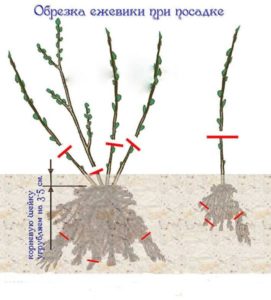
Caring for blackberries after planting in spring
Post-plant care of blackberry bushes should be aimed at ensuring their high survival rate. This means that you must carry out the following agrotechnical measures:
- First of all, you need to ensure an optimal water-air balance. Namely water and loosen the soil regularlyso that the roots of the plant can breathe normally and receive nutrition.
In the first months, it is necessary to water the blackberry seedlings especially often so that the plant quickly takes root (takes root) in a new place.
- However, watering should be approached with restraint. Blackberries cannot stand waterlogging, due to which the suction functions of its roots are disrupted and their dying off occurs, the period of growth of shoots is lengthened, their (shoots) maturation is delayed, which leads to a decrease in winter hardiness and productivity of the culture as a whole.
By the way! If you mulch your plantings, then the need for loosening will disappear, and you can water less often, because the mulch will retain moisture well.
- Follow education weedsby spending weeding.
- Also in the first year you need to pick all flowersso that the seedling does not waste its energy, otherwise it may lag far behind in development.
- Bend the shoots to the ground and cover for the winter... And in the spring it is timely to remove the shelter.
The site already has a detailed article about how to care for blackberries in autumn in order to properly prepare for winter, including told about ways to hide bushes for the winter.
- In the future (for the 2nd year and in subsequent years) you will need to carry out regular pruning of fruiting shoots, optimally - after harvest (autumn) either already in the spring.
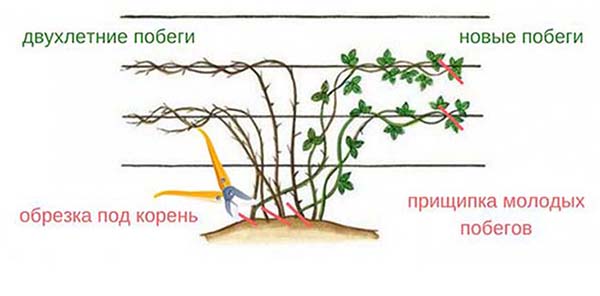
- Tie up bushes to trellises (supports).
The trellis must be strong because the shoots are quite heavy.
- Feed in spring and summer after fruiting.
- If necessary, carry out prevention and control of diseases and pests.
However! Unlike raspberries, most modern blackberry varieties have higher levels of disease and pest resistance.
Well, now you know the main point and subtleties of planting a blackberry seedling in open ground. You just have to choose the time, place on the site, prepare the landing pit and land according to all the rules. Good luck!
Video: blackberries - planting and care, all the secrets of a large harvest

